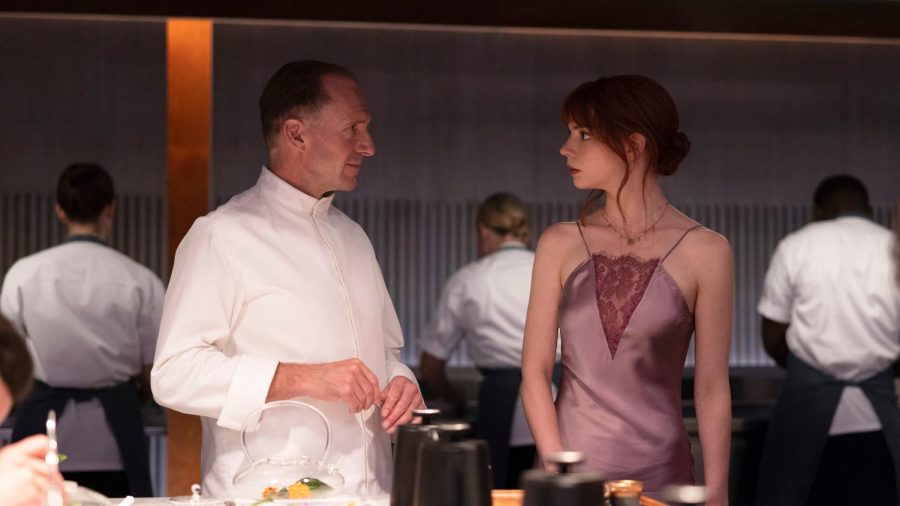‘The Menu’ was delicious
January 31, 2023
This review will contain minor spoilers for “The Menu.”
“The Menu” has been one of the most anticipated and talked-about films recently. Starring Ralph Fiennes, Anya Taylor-Joy, and Nicholas Hoult, the film is described as a horror satire. When Tyler (Hoult) and Margot (Taylor-Joy) travel to a remote island for a tasting hosted by prestigious Chef Julian Slowik (Fiennes), what starts as an interesting culinary experience quickly devolves into a hectic nightmare.
Something this film did right was subverting the viewer’s expectations. Watching a horror film centered around food and cooking, I was expecting poisoning, cannibalism, or starvation. The film cleverly bypassed these predictable food-related atrocities in favor of a more unique brand of psychological horror. Of course, the film featured no shortage of violence, but the real suspense was in anticipating Slowik’s next move.
The acting in this film was definitely its strongest point. Our main character, Margot, was excellently played by Anya Taylor-Joy. Like the audience, Margot is out of place and confused about this prestigious culinary world, and serves as a more relatable character who you want to root for. Nicholas Hoult was equal parts hilarious and infuriating as the pretentious, bumbling Tyler. Hong Chau impressed as Slowik’s mysterious and intimidating assistant, Elsa. But, the most impressive performance for me was Ralph Fienne’s portrayal of the titular chef. Slowik is, for all intents and purposes, the film’s antagonist. But I would argue that, second to Margot, he is the most likable character in the film. Any other actor might be tempted to portray Slowik as just a maniacal chef with a penchant for homicide, but Fiennes adds complexity and humanity as well. At his core, Slowik is an aging, jaded man who has had his one true passion in life corrupted by frivolous, ungrateful people. Fiennes turns Slowik from a cardboard cutout of a villain into a complex, relatable, and broken man.
The overarching theme of the film, in my opinion, is a critique on class and wealth. Throughout the film, we see this foreign world of excess through the eyes of our everyday heroine, Margot. As Slowik’s clientele gush about avant garde meals (cucumber and milk snow, a plate full of strange sauces, fermented yogurt and kelp) the audience cannot help but wonder: do people actually like this stuff? And the answer is no. The customers do not like the food, and Slowik really does not enjoy making it. The food is about status. Julian Slowik’s restaurant is very expensive, and multiple customers remark on how “at least we can afford to come here.” These ultra-rich food snobs just want to say they went there and flaunt that they can afford it. And Margot, an outsider, is treated with condescending apprehension for her more “simple” tastes. But in the end, it is a simple cheeseburger that seals Margot’s fate. She asks Slowik to make her one made with love; away from the world of oysters and emulsions. This simple, everyday dish ultimately saves Margot, and is the only thing Slowik has enjoyed cooking in many years.
There are so many things to be said about this film. The meaning behind Slowik’s dishes, the symbolism of the deaths, etc. These are all aspects that could be analyzed in depth, but I found that “The Menu” truly succeeded at the surface level. “The Menu” is a funny, poignant, frightening critique of the upper class, cushioned by elaborate meals and a scenic island setting. The beauty of this film was that it did not need the frills and showiness. Like Margot’s cheeseburger, “The Menu” stands on its own.
I give “The Menu” 4 stars out of 5.


